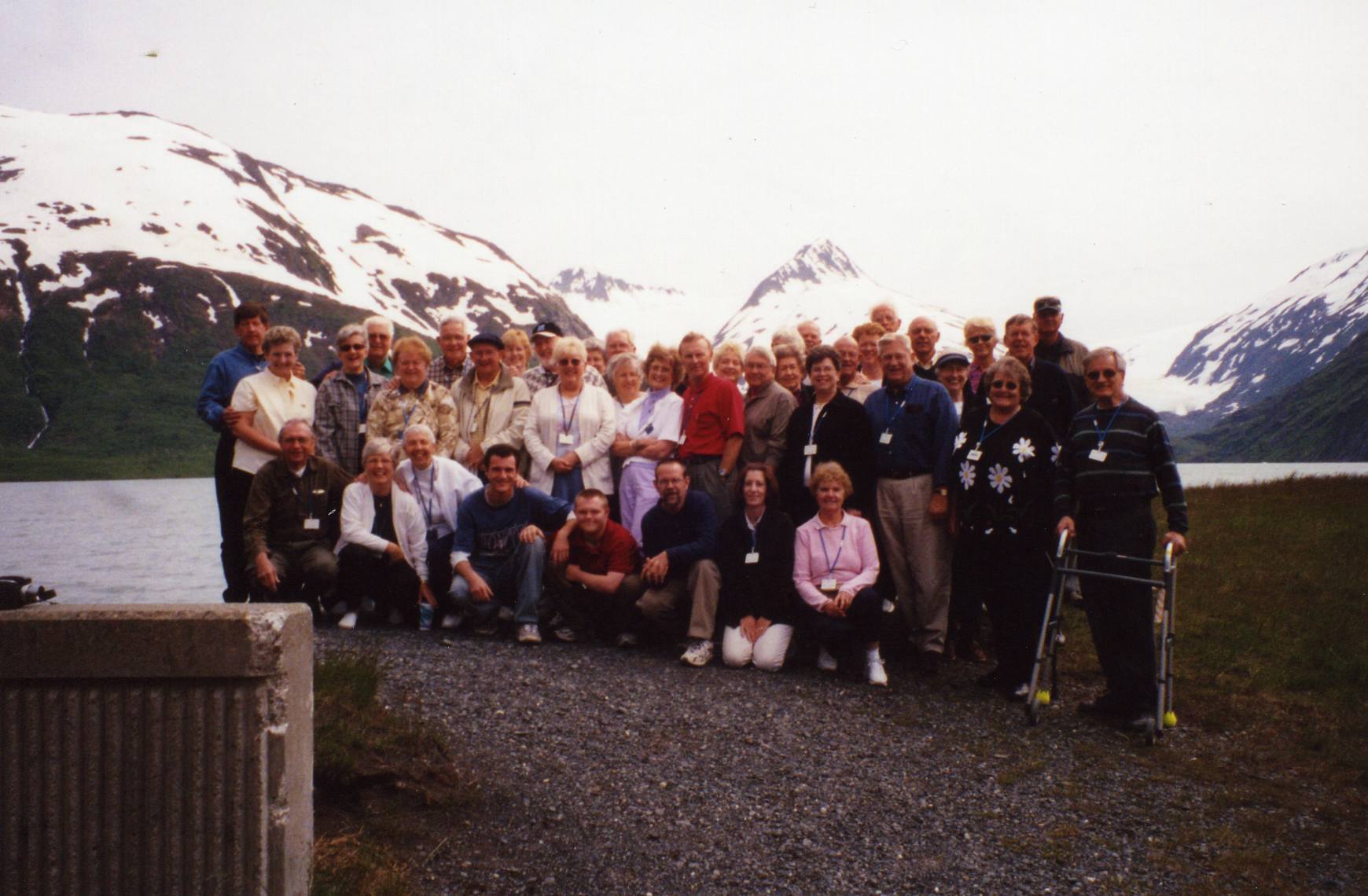

Sadly, our Alaskan Tour/Cruise had to came to an end, and now we just have the many memories and photos to look back on to recall the sites and beauty of Alaska we saw during fifteen arduous days. If you have not already done so, Barbara and I highly recommend you put Alaska on your list of places to visit and explore. The success of our Alaskan journey would not have been possible without the efforts of our tour/program director, Mary, and our coach commander, Lyle. Mary's efficiency and organization skills ensured a smooth running tour. It was Lyle's sharing of his vast knowledge of Alaska that kept our interest as we drove the many miles and hours on the land portion of our adventure. Over the years Lyle has logged over a million miles along the AL-CAN highway! One of the interesting facts that Lyle shared with us was in regards to the moose population in Alaska. When moose give birth they normally have twins or triplets, but because of the hungry bear population it is rare that you see a mother with more than one baby. Over the years, in order to save the moose population, mother nature has adapted to where most moose give birth in a four day period each Spring. Our journey covered 956 land miles and 1757 nautical miles (2021 statute miles) of cruising. Our tour group included 44 people from 13 different states. |

|
|
|
|
|
|
|
|
|
Here are a few of the questions the cruise directors have been asked: What is the dollar exchange rate in Alaska? Does the ship generate its own power? Does the crew sleep on board? What do they do with the ice shavings from the ice carvings? Does the elevator go to the front of the ship? What is our current elevation? In addition, I found the following definitions somewhat interesting which I extracted from the ship's log. PORT IS LEFT, STARBOARD IS RIGHT A novice traveler once said, "How come I have a starboard cabin and a port hole?" A possible derivation of these two words goes back to the early days of rowing ships. There was a certain kind of rudder. As most people are right handed, the rudder was on the right side of the vessel so this side became known as "the steering broadside" which was eventually abbreviated to starboard side. When these vessels came into the harbor it was safer to berth with the left hand side of the ship against the pier, thus avoiding and possible damage to the steering boards. Thus, the left side of the vessel became known as the port side. LAND AND NAUTICAL MILES The term nautical miles may have some mystification for some of you, so here is a brief explanation of the unit, "The Mile". When the Normans conquered England, William I divided up the country, other than crown lands, amongst the nobles who supported his adventures. The common people living on these "manors" were required to give their services free for three or four days a week to the Lord of the manor in return for such privileges as having a cottage and garden, grazing rights on common ground, and the right to collect as much firewood from the Lord's forests as they were able. As time went on however, people began to commute for their services by paying rent. The yeoman farmer developed and the manorial lands were slowly broken up. To establish ownership, some unit of measure was required. During the reign of Queen Elizabeth, an Act of Parliament was introduced which stated that one mile should be 5,280 feet in length. At sea, however, the term "mile" has a mathematical basis and the nautical mile is the length, in fact, one minute of angle of latitude. As the earth is not a perfect sphere, but flattened at the poles, this minute of area varies between 6,046 feet the Equator to 6,108 at the poles; a mean of 6,076 is thus actually used. "KRUISEN" ALONG "Cruising" comes from the Dutch word "kruisen", which means "to cross". While the pirates were searching for treasure ships to plunder, they would sail in a zigzag pattern moving through the shipping lanes. Obviously this form of sailing was not done on schedule, so many years later yacht owners borrowed the word and applied it to any carefree pleasure voyage. |
|
If you have questions about this page, contact:
Robert J. Gulliford -- gulliford@comcast.net